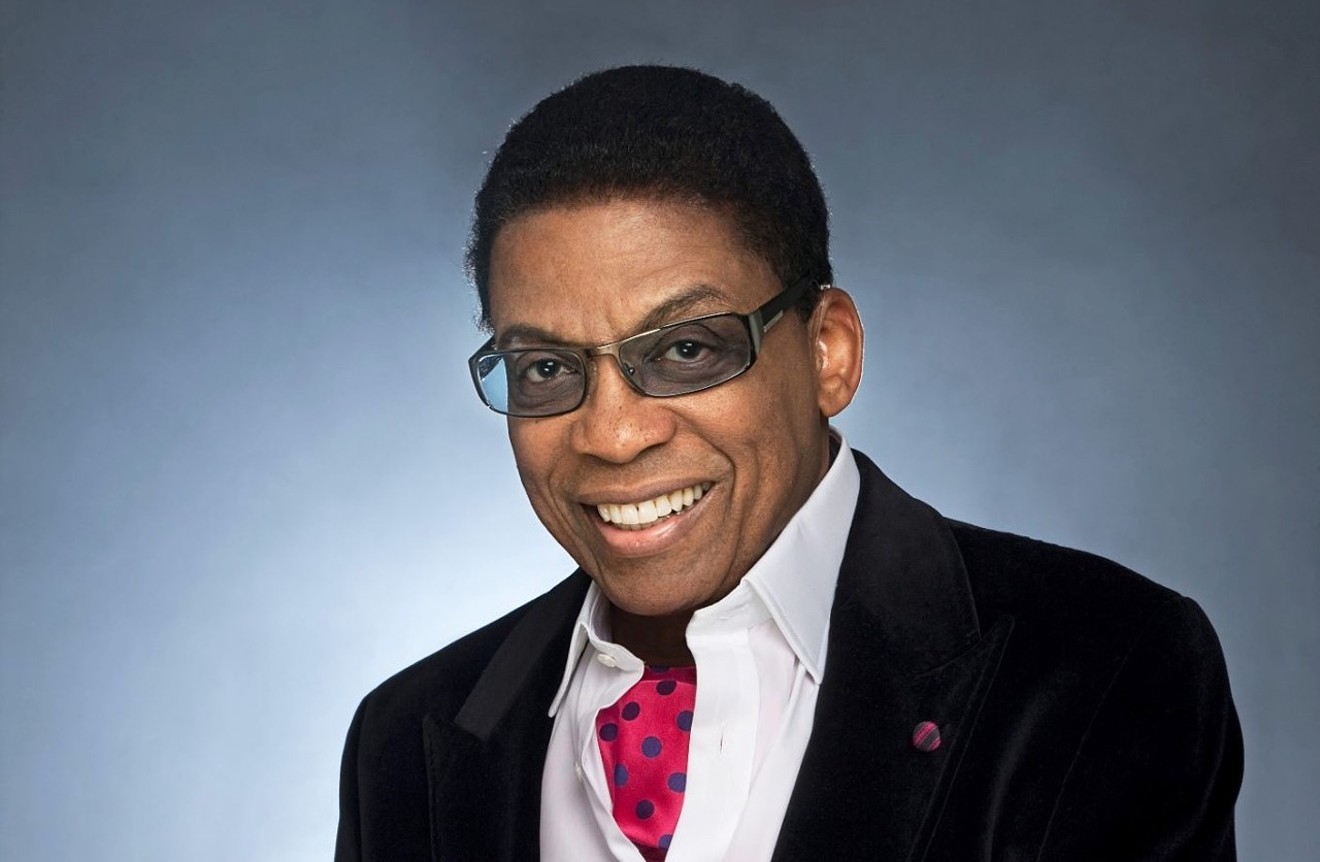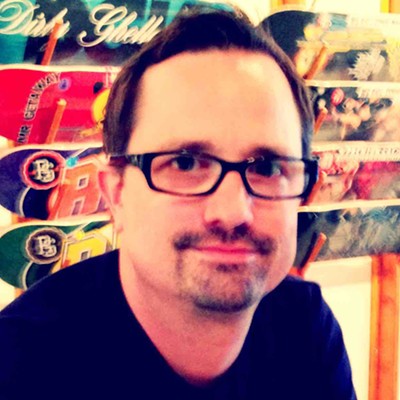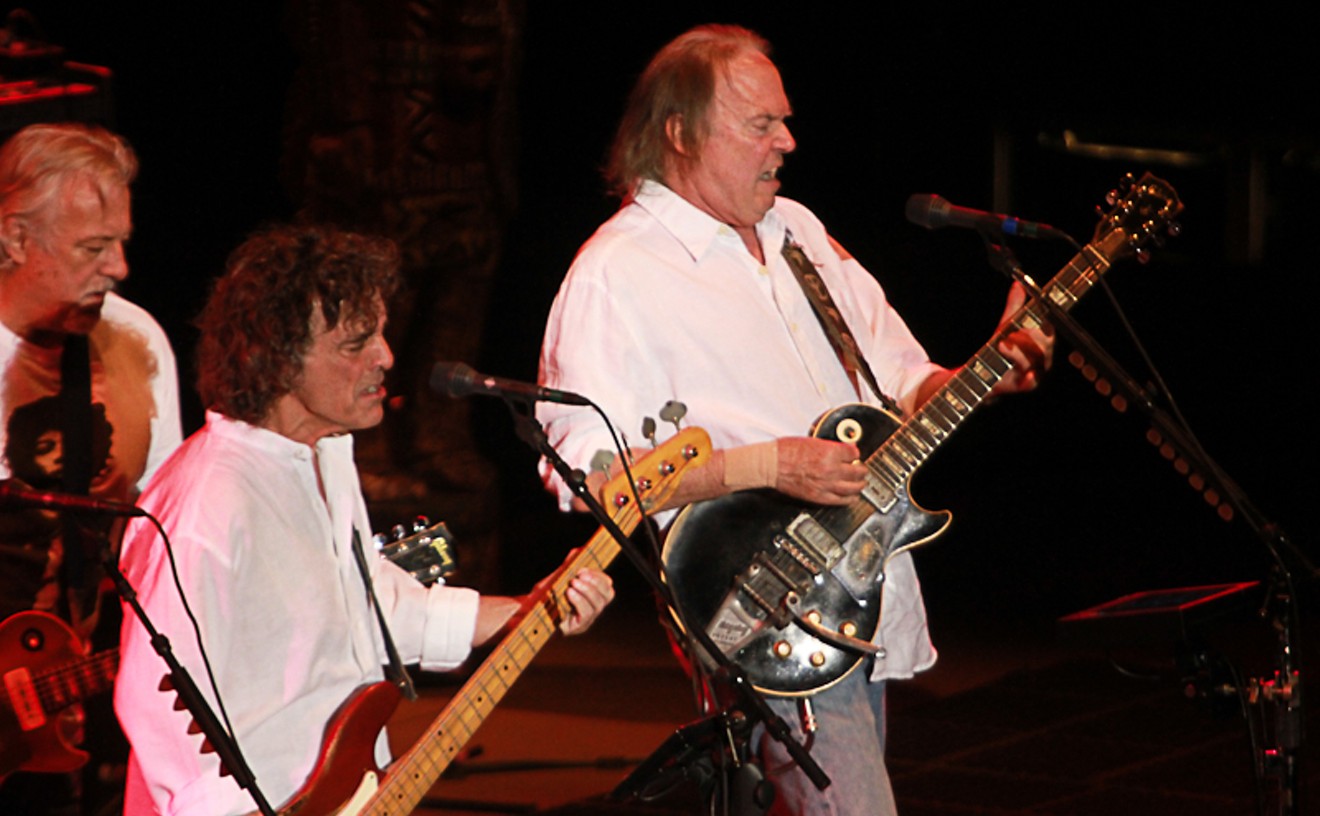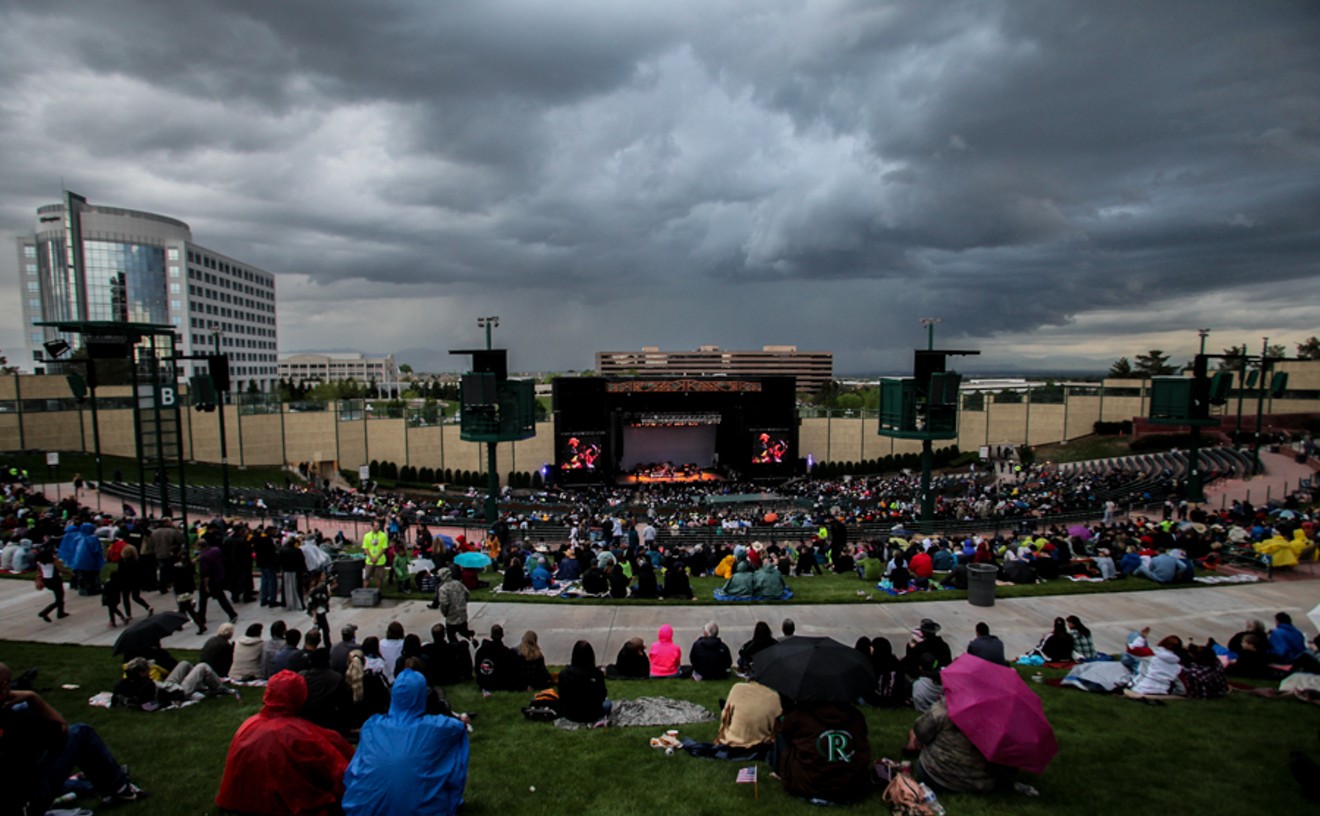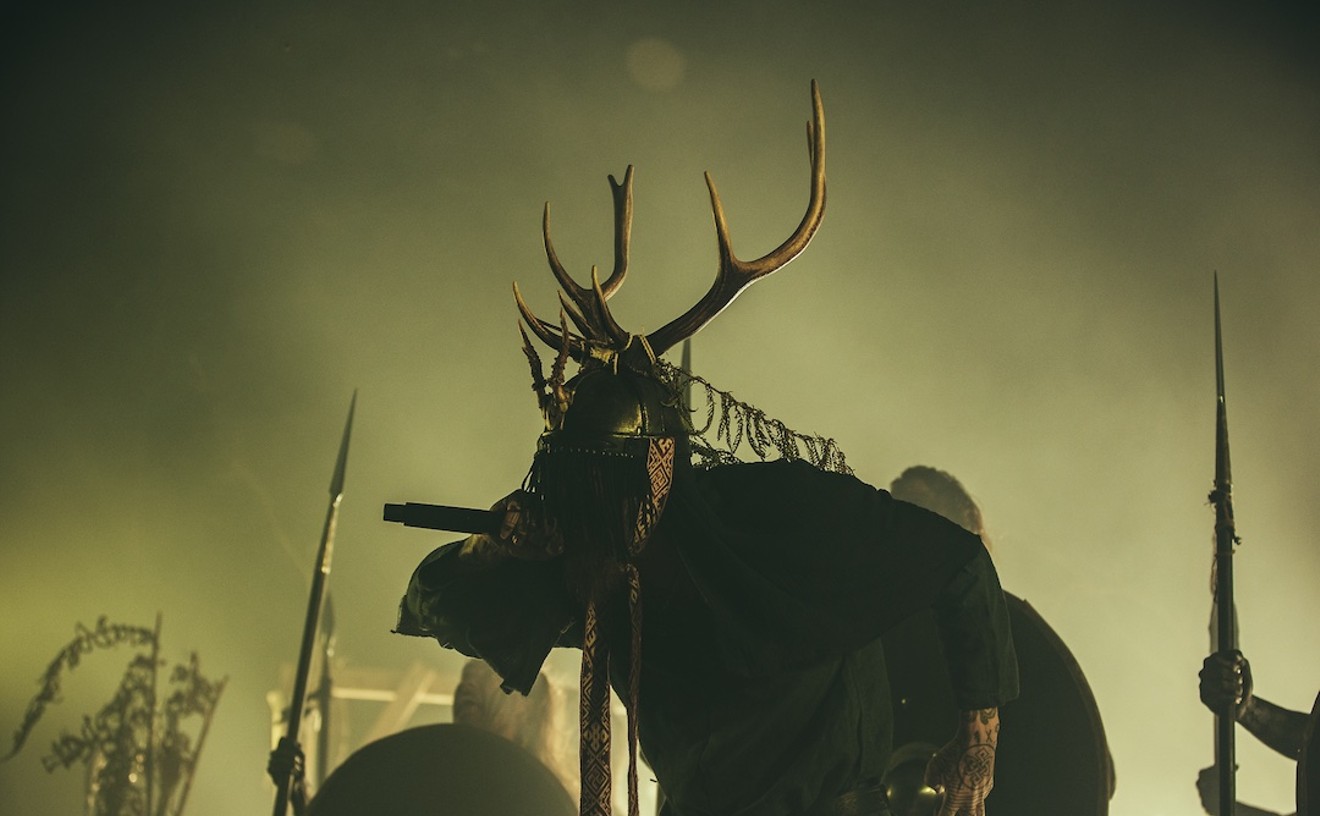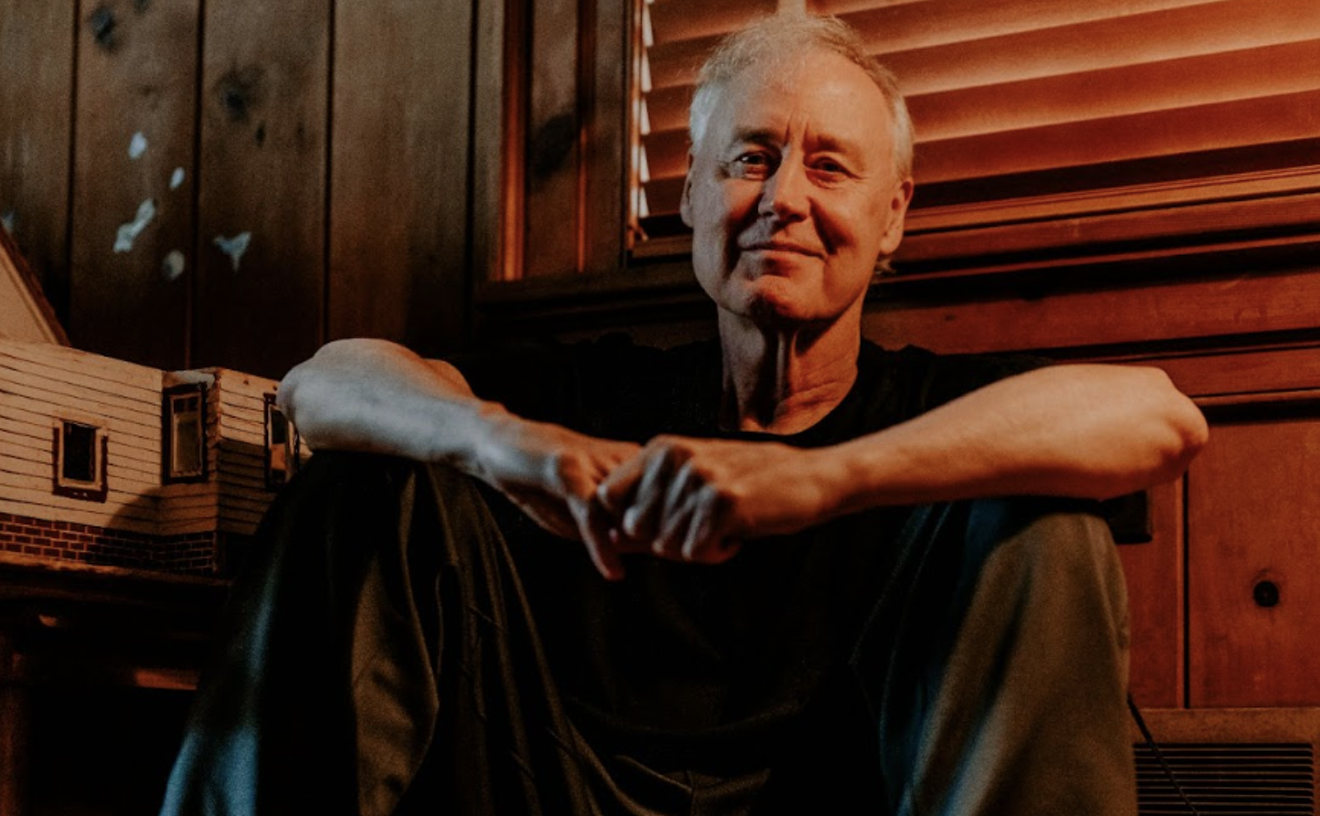“Well, you know, when I was a kid, my parents listened to jazz,” says Hancock, who will turn eighty in April and plays Denver’s Mission Ballroom on August 14. “Even when I started my classical lessons on the piano, I thought of jazz as being my parents' music.”
While his parents listened to big-band jazz orchestras like Duke Ellington and Count Basie, Hancock says he was initially attracted to classical music and, more than anything else, rhythm and blues.
“That was what I felt closest to,” he says. “I was born in Chicago. I mean, it’s a blues town anyway. R&B — that was part of what we did in my neighborhood. I even would sing kind of doo-wop songs on the corner with some of the guys.”
Everything changed, he says, when he first saw just how creative and innovative jazz musicians could be.
“When I was about fourteen, which was seven years after I started taking piano lessons, I heard a jazz trio in a variety show in my high school. And the piano player was in my class, but he was doing something on the piano I had no clue about what to do, and that was improvise. I saw that he had this talent for improvising — on my instrument! And I said, ‘I want to learn how to do that.’ And the kids were enjoying it. It had a beat. It had rhythm. They were having a good time.”
Hancock says he approached the young pianist after the show and got some pointers on who to listen to and how to learn the art of improvisation. It was like someone had lit a fire beneath him.
“Once that started happening, I got hooked,” he says. “Fortunately, I got hooked on jazz. And then I found out there were young people interested in it.”
Despite being among the first wave of young jazz musicians signed to the Blue Note label — along with his friends Freddy Hubbard, Wayne Shorter, Chick Corea and McCoy Tyner — Hancock says it wasn’t long before jazz started to lose its appeal for young people. But rather than watch the genre wither away, he decided to innovate by borrowing from other styles.
“As I grew older and some of those young musicians grew older, the idea of jazz being an aging music started to creep up,” says Hancock. “I tried to keep that from happening.”
At that time, he says, being plugged in was a new concept in the genre.
“It wasn’t my purpose necessarily in being the spokesperson for jazz, so to speak,” he says. “But just because of my own interests, when I started playing electric music, a more funky style of jazz, I didn’t know it, but I was helping to keep jazz alive. Chick, with his electric band, he was helping to keep jazz alive. The Weather Report — Joe Zawinul and them — they were keeping jazz alive. And they discovered Jaco Pastorius, who was younger than they were, so Jaco was keeping jazz alive. So this whole give-and-take has always continued through jazz.”
Jazz, he says, is going through another reawakening today, aided in large part by Hancock’s partner on his current tour, Kamasi Washington.
“We’re seeing this huge influx of new musicians on a new scene,” he says. “It’s people like Kamasi who are introducing [young people] to the tradition of jazz, and Terrace Martin is doing the same thing. It’s building the foundation into the lives of younger people, so they know where this music is coming from, where its foundation comes from. At the same time, they see that the younger musicians are moving the music forward into the future.
“That’s the whole kind of new spirit of this scene coming from L.A. that's bringing a whole new audience for jazz. My audience has continued to be multi-generational, but they’re bringing more young people to my concerts, and of course to their own, and it’s keeping jazz alive.”
As jazz once again grows in popularity, musicians in other genres are picking up influences from the jazz canon. Hancock says rap music, in particular, has grown to include a wide array of sounds that have long been part of the jazz lexicon.
“A lot of the hip-hop artists actually are very familiar with jazz,” he says. “Like Snoop Dogg, for example, and like J Dilla. He borrowed a lot of clips from jazz. Common is a huge jazz fan. And we know what Kendrick Lamar did with To Pimp a Butterfly. He had Terrace Martin as his primary producer, and he’s got Kamasi on that record, he’s got Robert Glasper on it, he’s got Thundercat, he’s got a lot of the young musicians that he already knew, that he was brought up with.”

Herbie Hancock during the recording Session for Wayne Shorter's Etcetera album, June 1965.
Francis Wolff
“Jazz is alive and well, and it’s thriving, and there are many young musicians now who are playing more in the traditional swing kind of groove,” he says. “But at the same time, they are familiar with the electronic advancements that have happened, with synthesizers and the recording process, and they’re incorporating those, too. I’m seeing that as a really strong flow toward the future, so I’m excited about all of it.”
Modern musicians, he says, seem to have an interest in learning new things from wherever they appear, and it’s given Hancock a lot of hope for the future of jazz.
“This kind of collaborative spirit that many of the young musicians that I’ve been working with have, that is how they’ve been working on their own projects and how they’ve been working when they do some club work,” he says. “They sit in with each other, kind of like what I used to do in my younger years. It’s inspiring, and it's warm and encouraging. That kind of helps wake up my own youthful spirit, being a part of that.”
Even after five decades in the business, Hancock is still finding new things to get excited about, which in turn keeps his music fresh and relevant.
“I like to keep everything open,” he says. “I’m eager to try elements that I haven’t tried before. I like to do things because they’re hard, not because they’re easy, as [President] Kennedy said. I feel more like an astronaut. I love exploring new territory, finding new things to do and being inspired by things that I wasn’t familiar with before. I’m so happy about it.”
Herbie Hancock plays the Mission Ballroom, 4242 Wynkoop Street, Wednesday, August 14, with Kamasi Washington. Find information and tickets at missionballroom.com.

